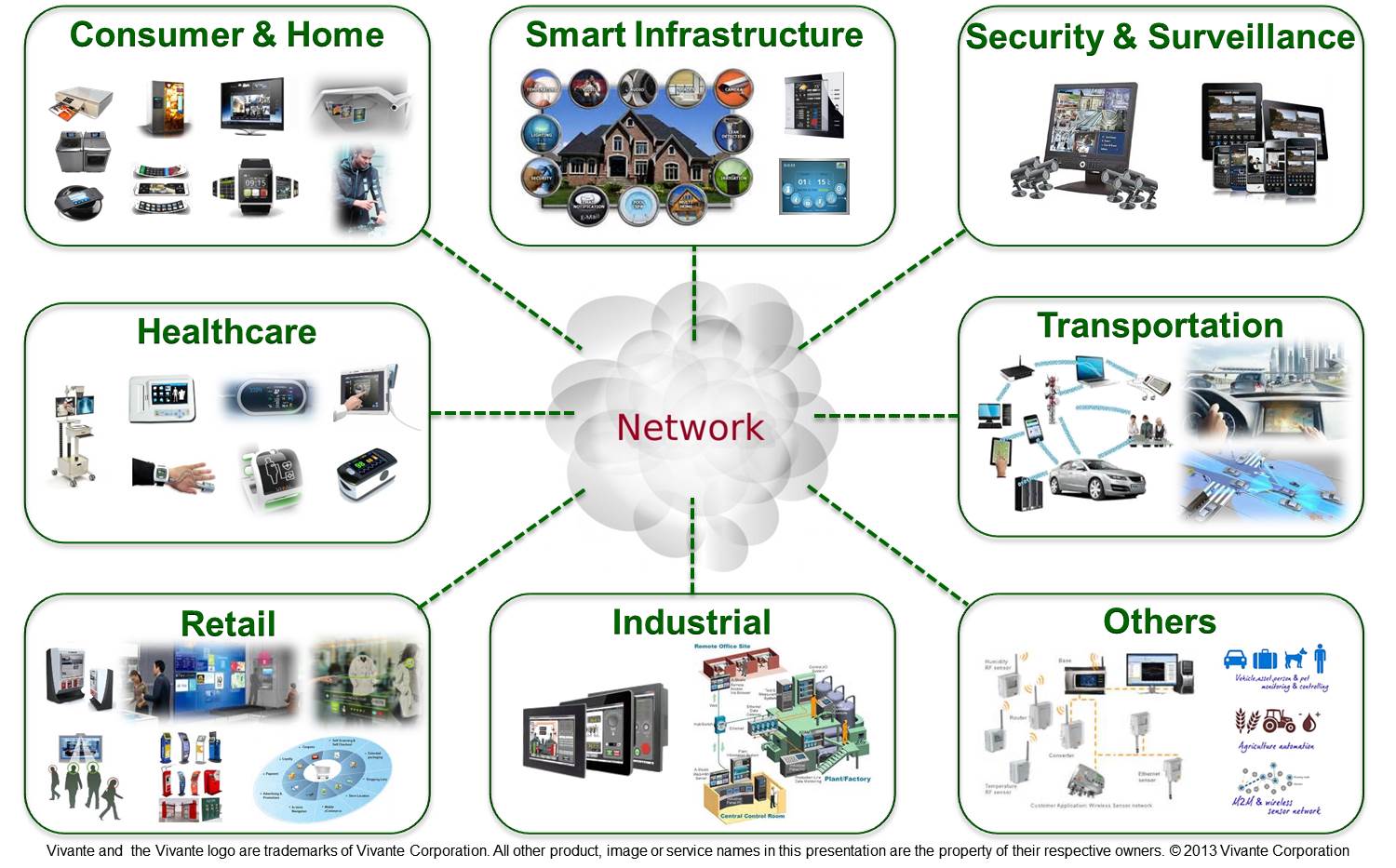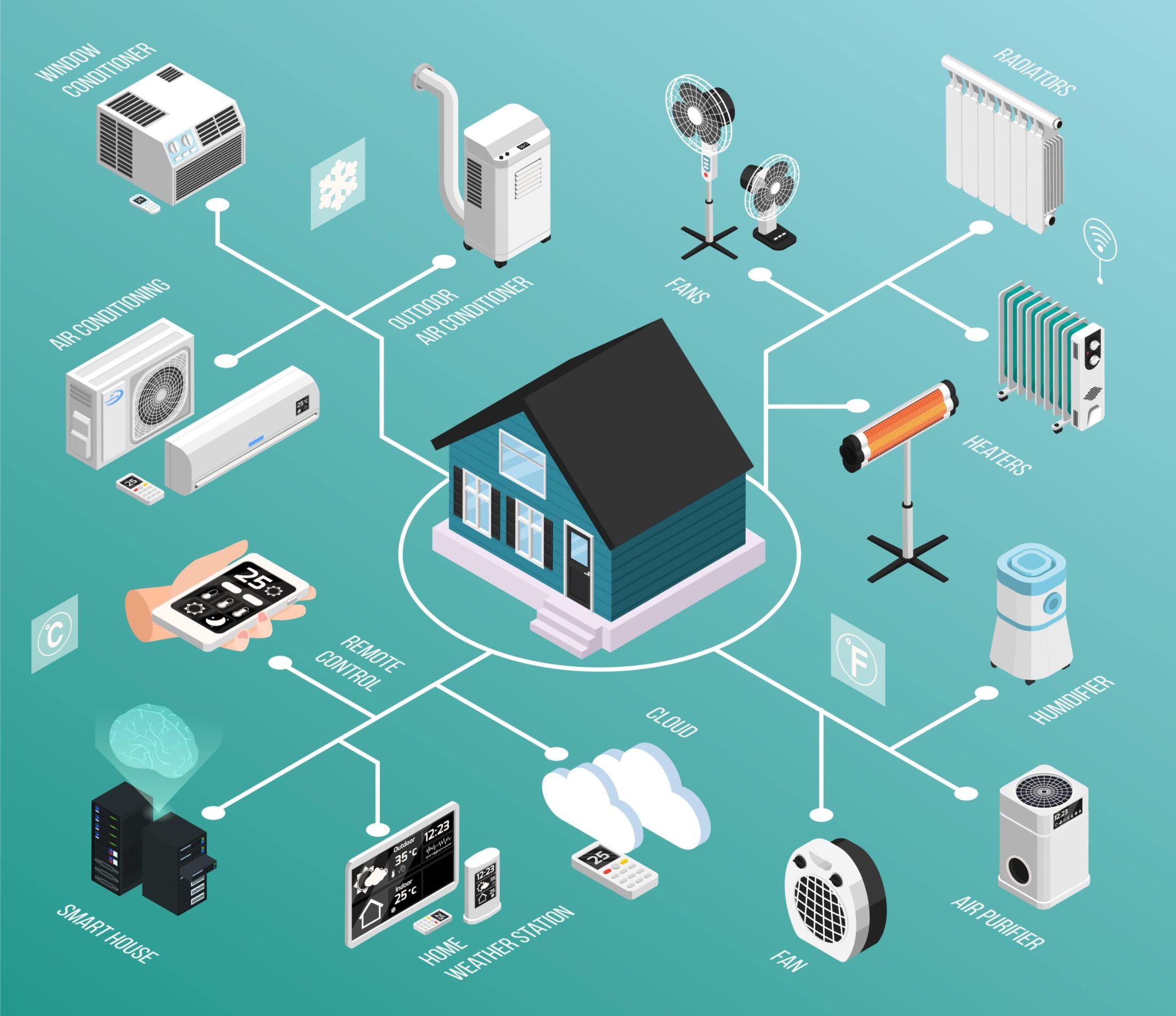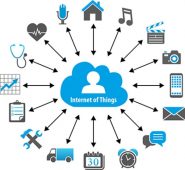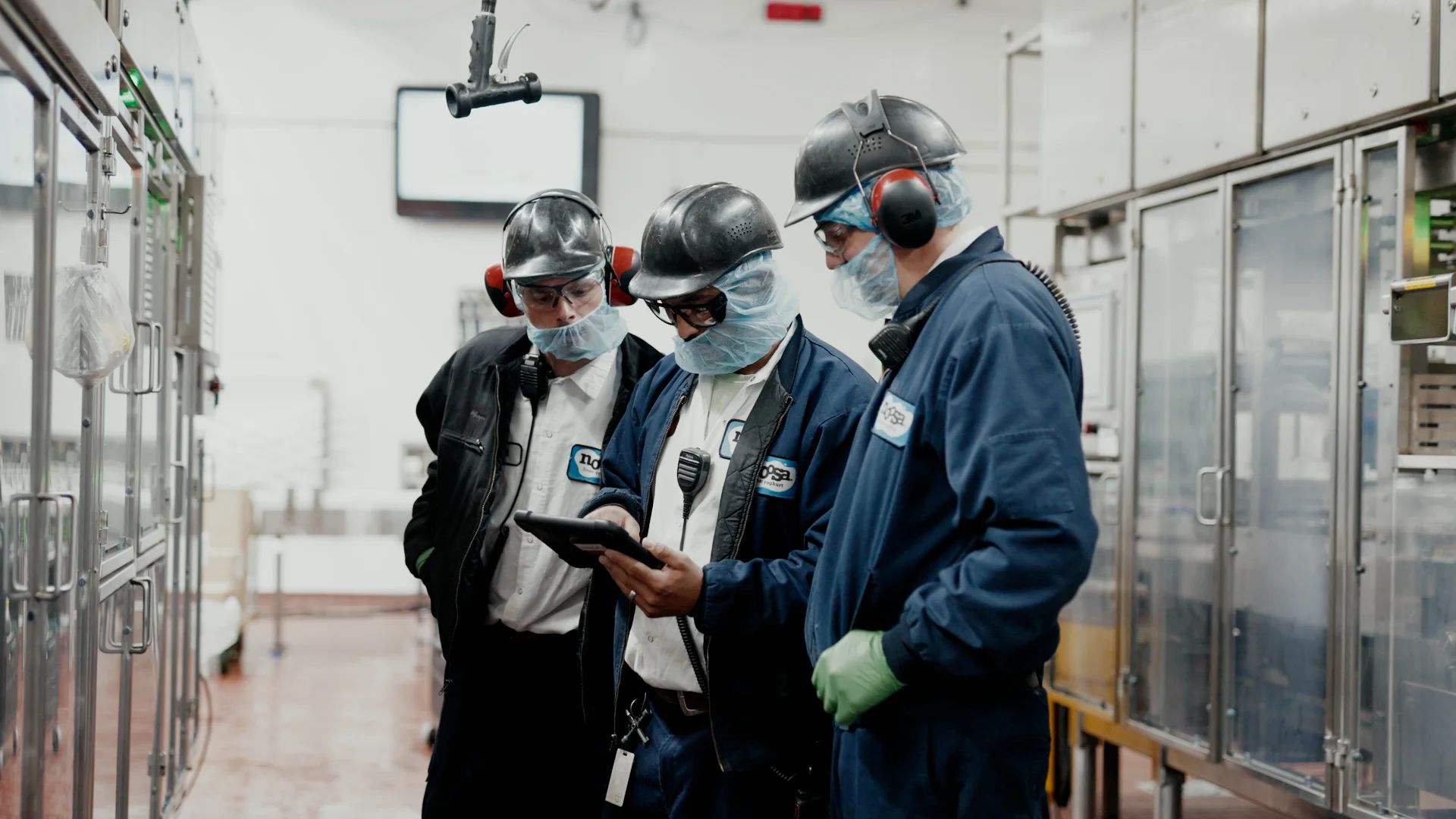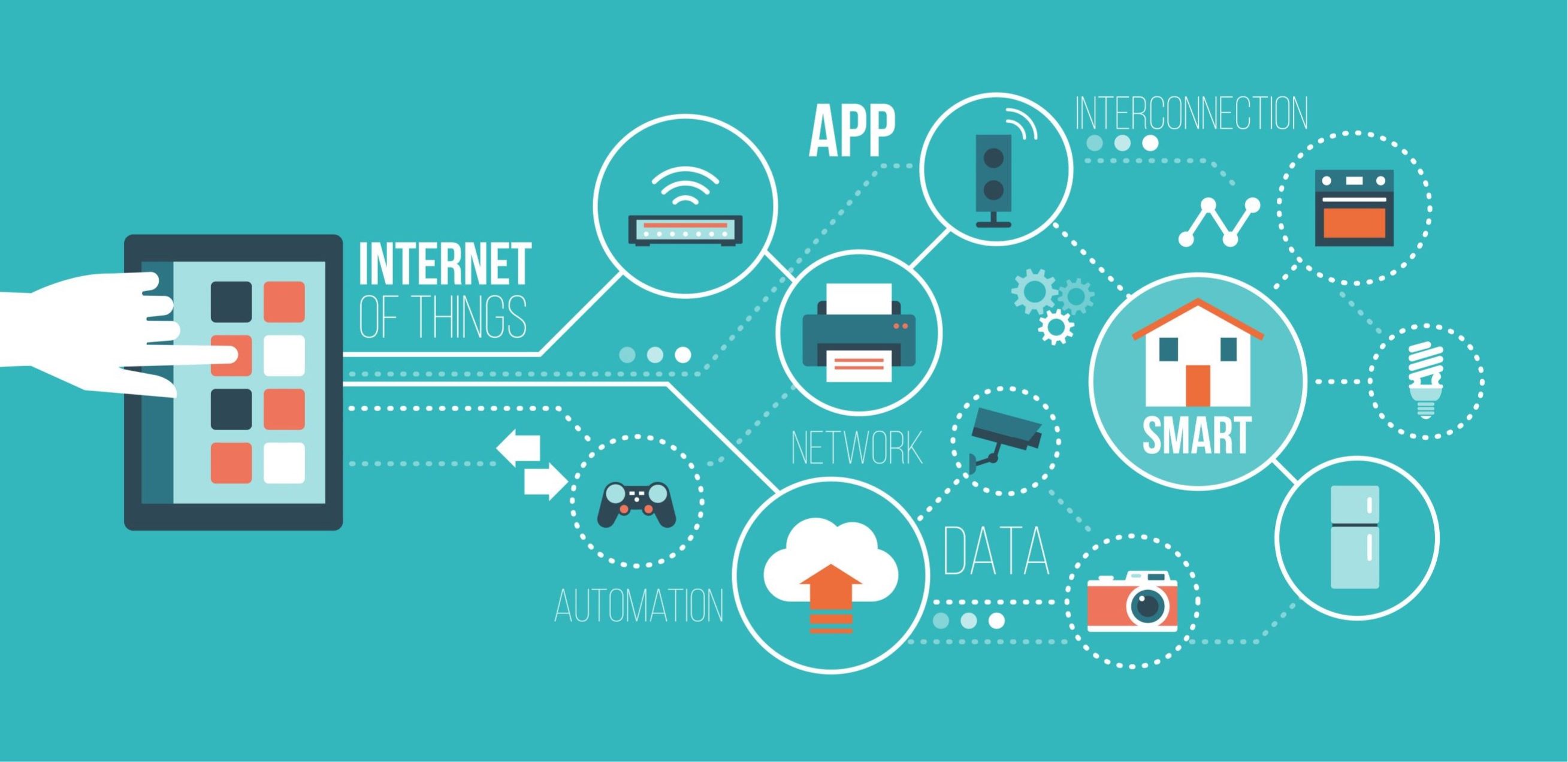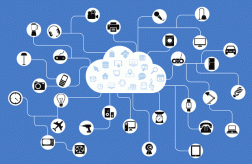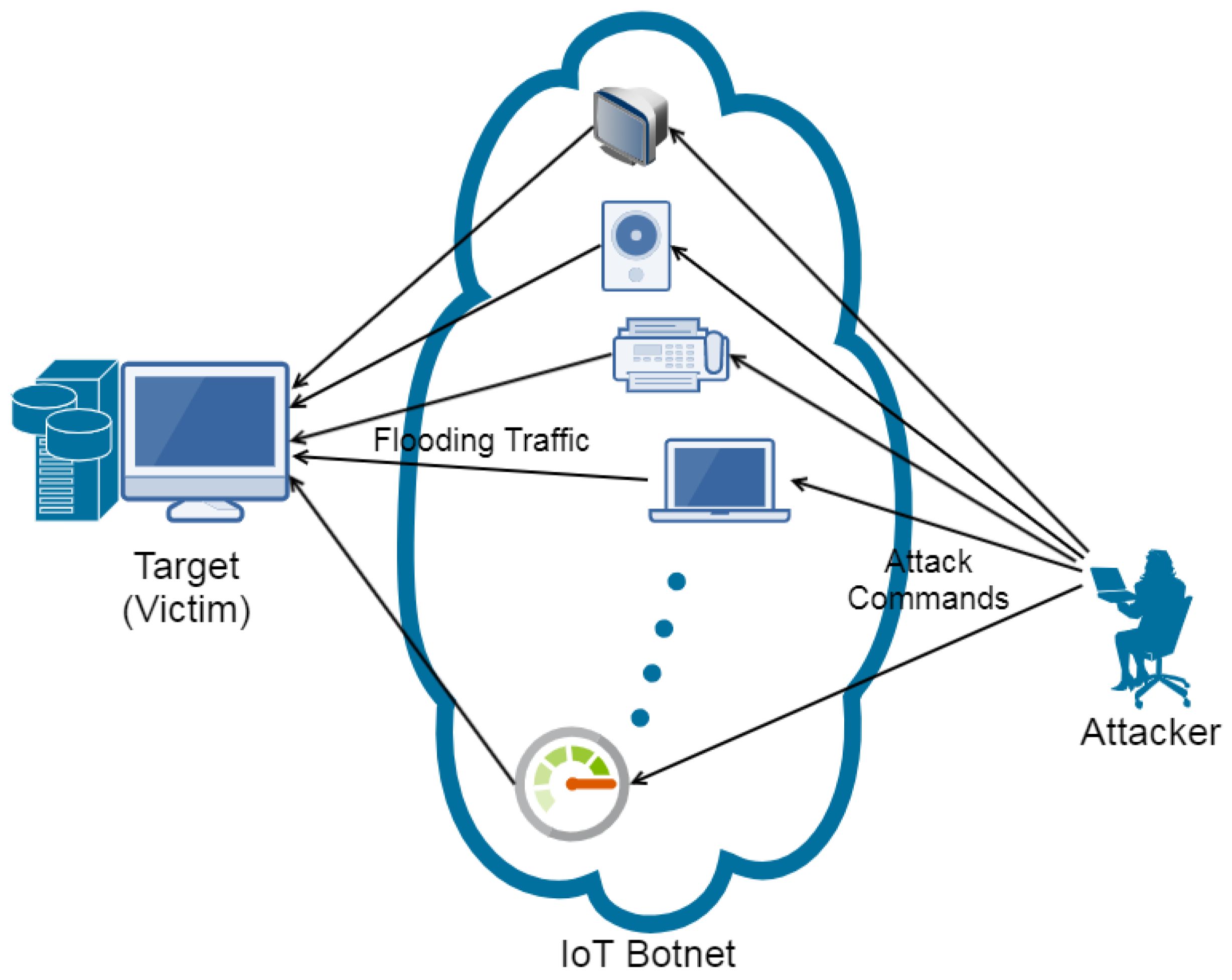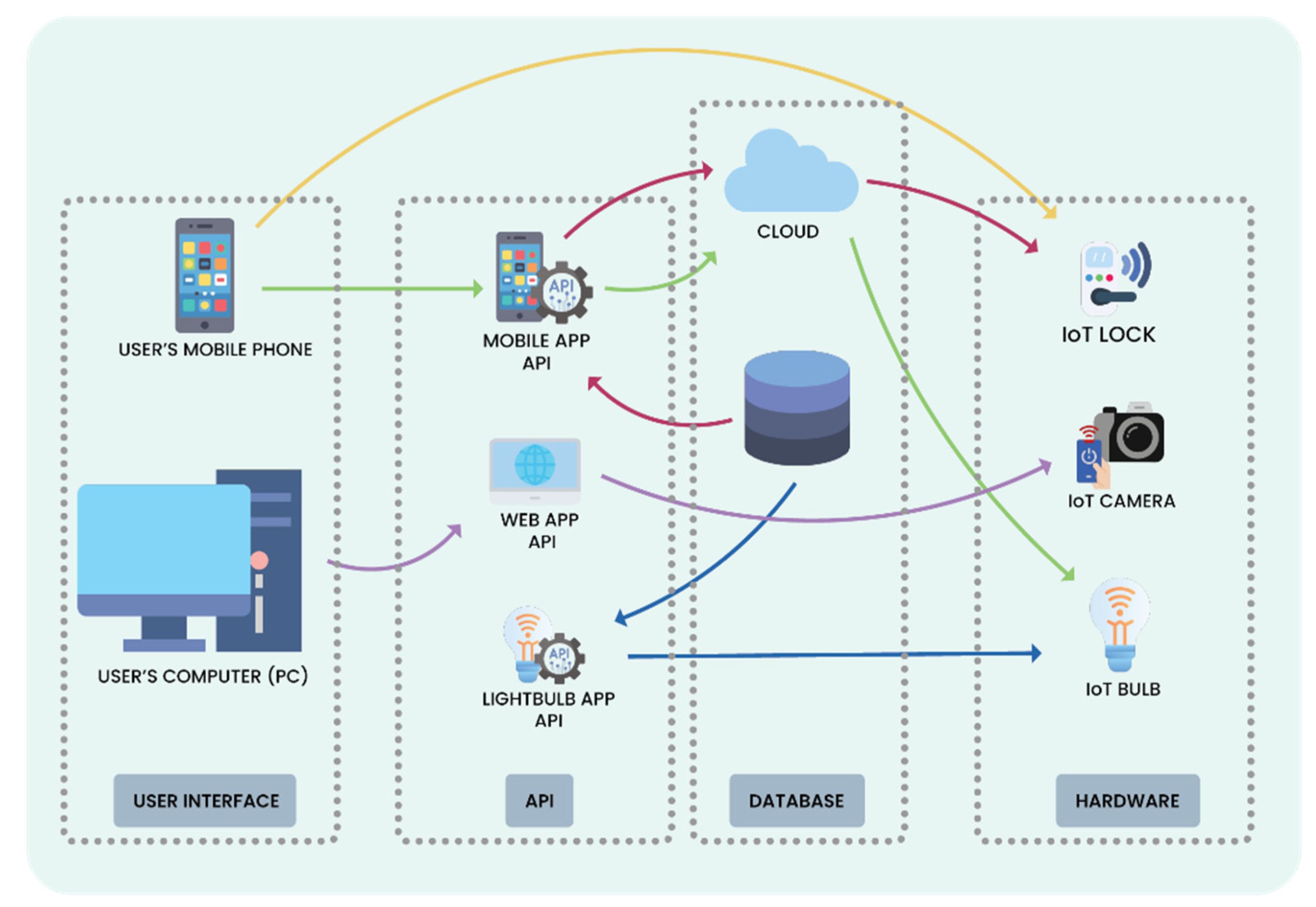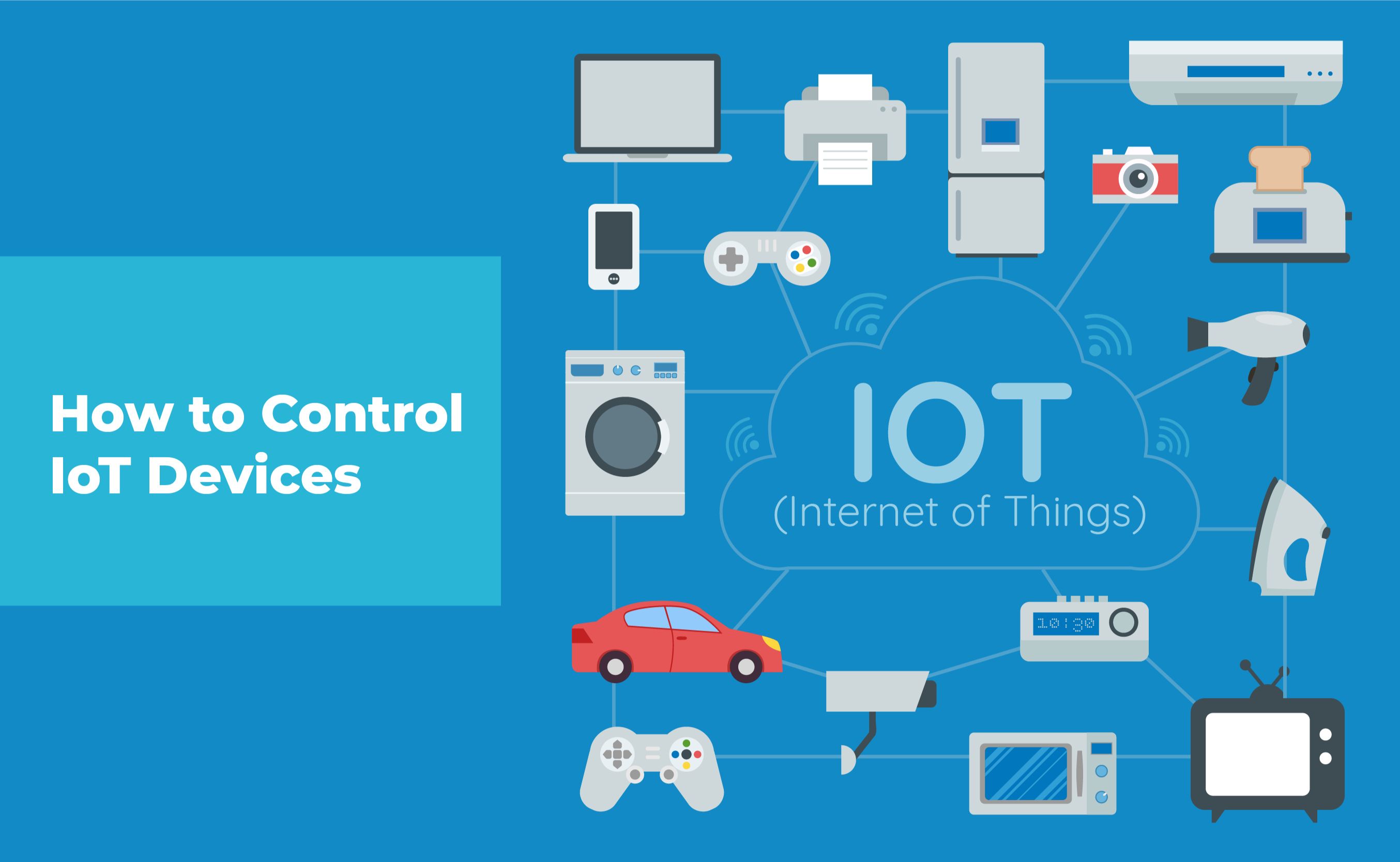Introduction
The Internet of Things (IoT) has revolutionized the way we interact with technology, connecting various devices to create a more efficient and convenient lifestyle. IoT devices have become an integral part of our everyday lives, from enhancing our homes to improving industries and even healthcare. In this article, we will explore different examples of IoT devices and how they are transforming various sectors.
IoT devices are essentially smart devices that are embedded with sensors, software, and connectivity capabilities, allowing them to collect and exchange data. These devices utilize the power of the internet to communicate with each other and perform tasks autonomously. From controlling our home appliances to monitoring industrial operations, the possibilities are endless.
One of the most popular applications of IoT devices is in the realm of smart homes. These devices, such as smart thermostats, smart lighting systems, and voice-controlled assistants, provide homeowners with convenient and automated control over various aspects of their living spaces. By enabling remote control through smartphones or tablets, IoT devices in smart homes offer increased energy efficiency, enhanced security, and improved comfort levels.
Furthermore, wearable devices have become increasingly prevalent in recent years. These IoT devices, including smartwatches, fitness trackers, and health monitoring devices, allow individuals to track their health, fitness levels, and even receive real-time notifications. Wearable IoT devices have revolutionized the way we approach personal health and fitness, empowering individuals to take control of their well-being.
IoT devices have also made a significant impact on industries and manufacturing processes. Industrial IoT devices, such as sensors and monitoring systems, enable businesses to collect and analyze data in real-time. This data-driven approach enhances operational efficiency, reduces downtime, and improves overall productivity.
The healthcare sector has witnessed remarkable advancements with the integration of IoT devices. IoT-enabled medical devices, like connected glucose monitors, remote patient monitoring systems, and smart pills, allow healthcare professionals to monitor patients’ conditions remotely and provide timely interventions. Additionally, these devices streamline healthcare processes, improve patient outcomes, and reduce healthcare costs.
Smart Home Devices
Smart home devices are one of the most prominent examples of IoT technology. These devices are specifically designed to enhance the functionality and convenience of our homes. From smart thermostats to security systems, smart home devices are transforming the way we interact with our living spaces.
One popular smart home device is the smart thermostat. These advanced thermostats use sensors and connectivity features to learn your heating and cooling preferences and adjust the temperature automatically. They can also be controlled remotely through smartphone apps, allowing users to adjust the temperature even when they are not at home. Smart thermostats have the potential to significantly reduce energy consumption and save homeowners money on their utility bills.
Home security is another area greatly benefited by IoT devices. Smart home security systems offer features such as smart locks, door/window sensors, indoor and outdoor cameras, and motion detectors. These devices can be easily connected and controlled through a central hub, providing homeowners with real-time notifications and remote access to surveillance footage. With the ability to monitor and control security systems from anywhere, smart home devices offer enhanced peace of mind and improved home security.
Lighting automation is another exciting aspect of smart home devices. Smart light bulbs and lighting systems can be controlled through voice commands or smartphone apps, allowing users to set schedules, adjust brightness, and change colors. This automation not only adds convenience but also contributes to energy efficiency by allowing users to turn off lights remotely or have them automatically turned off when no one is in the room.
Intelligent virtual assistants, like Amazon Echo or Google Home, have become a staple in many smart homes. These devices use voice recognition technology to perform a wide range of tasks, such as playing music, answering questions, controlling other IoT devices, and even ordering groceries. Virtual assistants continue to evolve, becoming more integrated with other smart devices to provide a seamless and interconnected smart home experience.
Overall, smart home devices are transforming our living spaces into efficient, convenient, and secure environments. With the ability to control and monitor various aspects of our homes remotely, these IoT devices are reshaping the way we interact with our living spaces, making our lives more comfortable and enjoyable.
Wearable Devices
Wearable devices have gained immense popularity in recent years, becoming an integral part of the IoT landscape. These devices, worn on the body, offer a wide range of functionalities and applications, from fitness tracking to health monitoring and beyond.
One of the most well-known examples of wearable devices is the smartwatch. These devices do much more than just tell time. Smartwatches offer features such as activity tracking, heart rate monitoring, sleep tracking, and smartphone notifications. They can also provide users with access to apps, allowing them to check emails, make calls, and even control other IoT devices. With stylish designs and advanced functionalities, smartwatches have become a fashion statement while empowering users to live a healthier and more connected lifestyle.
Fitness trackers are another popular category of wearable devices. These devices monitor physical activity, including steps taken, distance traveled, and calories burned. Fitness trackers often come with accompanying smartphone apps that provide detailed statistics and insights into overall health and fitness progress. By wearing these devices, individuals can set goals, track their progress, and stay motivated to lead a more active lifestyle.
Health monitoring devices have also made significant strides in the wearable technology industry. From blood pressure monitors to glucose monitors, wearable health devices provide individuals with real-time data on their vital signs and medical conditions. These devices enable users to track their health conditions on a regular basis, reducing the need for frequent doctor visits and allowing for timely interventions if necessary. Wearable health devices are empowering individuals to take charge of their own health and well-being.
Wearable technology has also expanded to include smart clothing and accessories. Tech-infused garments can monitor biometrics, such as heart rate and body temperature, during workouts or daily activities. Smart glasses and smart rings are also gaining traction, offering augmented reality experiences, notifications, and control over IoT devices with a simple gesture or touch.
As wearable devices continue to advance, they are becoming more sophisticated, accurate, and aesthetically appealing. With a wide range of options available to suit different needs and styles, wearable devices have emerged as an essential tech companion, seamlessly integrating into our daily lives and encouraging healthier, more connected lifestyles.
Industrial IoT Devices
Industrial IoT devices have revolutionized the way industries and businesses operate, offering enhanced efficiency, productivity, and profitability. These devices are designed to collect valuable data and provide real-time insights into operations, enabling businesses to make informed decisions and optimize their processes.
Sensors are the backbone of industrial IoT devices, collecting data on various parameters such as temperature, humidity, pressure, and machine vibrations. These sensors are integrated into machinery and equipment, providing constant monitoring and analysis of performance. By analyzing this data, businesses can identify patterns, predict maintenance needs, and prevent costly equipment failures.
Connected asset management is another critical application of industrial IoT devices. With RFID tags and GPS tracking systems, businesses can keep track of their assets, such as machinery, vehicles, and inventory. This real-time asset tracking enables efficient resource allocation, reduces equipment loss, and improves overall inventory management.
Industrial IoT devices also play a significant role in supply chain management. By utilizing IoT-enabled tracking systems, businesses can monitor the movement of products, from production to delivery. This visibility allows for optimized logistics, reduced delays, and improved customer satisfaction. IoT devices in supply chain management also enhance inventory management, ensuring timely restocking and preventing stockouts.
Remote monitoring and control are crucial features offered by industrial IoT devices. With the ability to connect and control various systems and equipment remotely, businesses can streamline operations and reduce the need for manual interventions. This remote accessibility not only saves time but also improves worker safety by minimizing exposure to hazardous environments.
Predictive maintenance is another key advantage provided by industrial IoT devices. By continuously monitoring equipment performance and analyzing data, businesses can implement proactive maintenance measures. This approach reduces downtime, extends the lifespan of machinery, and prevents unexpected failures. Predictive maintenance also aids in optimizing maintenance schedules and reducing unnecessary maintenance costs.
Overall, industrial IoT devices are transforming industries by improving productivity, reducing costs, and enhancing the overall efficiency of operations. With the ability to collect and analyze real-time data, businesses can make data-driven decisions and stay competitive in today’s rapidly evolving market.
Healthcare IoT Devices
The integration of IoT technology in healthcare has paved the way for significant advancements in patient care, remote monitoring, and overall health management. Healthcare IoT devices offer a wide range of applications, from wearable devices to connected medical equipment, transforming the way healthcare services are delivered.
One of the key areas where healthcare IoT devices have made an impact is remote patient monitoring. IoT-enabled devices, such as connected glucose monitors, blood pressure monitors, and wearable health trackers, allow healthcare professionals to remotely monitor patients’ health conditions. This real-time monitoring enables timely interventions, reduces hospital readmissions, and improves overall patient outcomes.
IoT devices also play a crucial role in telemedicine, enabling remote medical consultations and virtual healthcare services. Using IoT-enabled devices, patients can connect with healthcare professionals through video calls, share health data, and receive medical advice from the comfort of their homes. This technology not only enhances accessibility to healthcare services but also reduces the burden on healthcare facilities.
Connected medical equipment is another significant application of healthcare IoT devices. IoT-enabled devices, such as smart hospital beds, medication dispensers, and surgical instruments, streamline healthcare processes and enhance patient safety. These devices can track inventory, monitor usage, and even provide real-time alerts in case of any malfunction or maintenance needs.
IoT devices are also being utilized in medication management. Smart pill dispensers and medication reminder devices help patients adhere to their prescribed medications, reducing the risk of medication errors and improving treatment outcomes. These devices can send reminders, dispense the correct dosage, and even track medication intake to ensure the patient’s adherence to their treatment plan.
Furthermore, IoT technology is being harnessed in health and wellness applications. IoT-enabled fitness trackers, smart scales, sleep monitors, and other wearable devices provide users with valuable insights into their health and well-being. These devices track physical activities, monitor sleep patterns, and provide personalized recommendations for maintaining a healthy lifestyle.
With healthcare IoT devices, the healthcare industry is transitioning to a more patient-centered and proactive approach. These devices enable continuous monitoring, personalized care plans, and remote access to healthcare services, ultimately improving patient outcomes, enhancing preventive care, and reducing healthcare costs.
Agriculture IoT Devices
Agriculture IoT devices are playing a vital role in revolutionizing the farming industry, offering innovative solutions to improve crop yield, optimize resource management, and increase overall efficiency. These devices utilize advanced technologies to monitor and control various aspects of agricultural operations, transforming traditional farming practices.
One of the key applications of IoT devices in agriculture is precision agriculture. IoT-enabled sensors and monitoring systems are utilized to collect and analyze data on soil moisture levels, temperature, humidity, and other environmental factors. This data allows farmers to make well-informed decisions regarding irrigation, pesticide use, and fertilization, optimizing crop growth and minimizing resource wastage.
Connected weather stations are another essential component of agriculture IoT devices. These stations provide real-time weather data, including rainfall, wind speed, and temperature. By integrating weather data with crop and soil information, farmers can make data-driven decisions regarding planting times, pest control, and harvesting, leading to improved crop yield and quality.
IoT devices are also utilized in livestock management. Connected wearables and monitoring devices enable farmers to track the health and well-being of their livestock. These devices can provide data on vital signs, behavior patterns, and location, allowing early detection of any health issues and optimizing feeding and breeding practices.
To optimize water usage, agriculture IoT devices can be utilized in irrigation systems. Smart irrigation systems use sensors to monitor soil moisture levels and weather conditions, adjusting irrigation schedules accordingly. This targeted approach ensures that crops receive adequate hydration while minimizing water usage and reducing environmental impact.
Another key application of agriculture IoT devices is in crop monitoring and protection. Drones equipped with high-resolution cameras and sensors can provide valuable insights into crop health, detect diseases or nutrient deficiencies, and identify areas for intervention. This information can help farmers take timely action to prevent crop losses and increase overall productivity.
Overall, agriculture IoT devices are revolutionizing the farming industry by offering precise, data-driven solutions to optimize resource management, improve crop yield, and reduce environmental impact. By harnessing the power of IoT technology, farmers can achieve greater efficiency, profitability, and sustainability in their operations.
Transportation IoT Devices
The integration of IoT devices in transportation has ushered in a new era of connectivity, efficiency, and safety in the industry. These devices are transforming how goods and people are transported, offering real-time data, automation, and improved decision-making capabilities.
One of the key applications of transportation IoT devices is in fleet management. IoT-enabled devices, such as vehicle trackers and sensors, provide fleet operators with real-time information on vehicle location, fuel consumption, and maintenance needs. With this data, businesses can optimize routes, schedule maintenance proactively, and monitor driver behavior, leading to improved fleet efficiency and reduced costs.
Connected traffic management systems are another important aspect of transportation IoT devices. These systems utilize sensors, cameras, and real-time data to monitor traffic flow, analyze congestion patterns, and offer dynamic route guidance to drivers. This data-driven approach helps reduce traffic congestion, improve commuter experiences, and optimize the overall transportation infrastructure.
IoT devices are also transforming the logistics and supply chain industry. Connected sensors in shipping containers can provide real-time data on location, temperature, humidity, and even security breaches. This visibility enables accurate tracking and monitoring of goods throughout the supply chain, reducing loss, ensuring product quality, and enhancing overall logistics efficiency.
Smart parking solutions are another significant application of transportation IoT devices. These systems utilize sensors and connectivity to guide drivers to available parking spaces and enable real-time payment for parking services. By reducing the time and effort spent on finding parking, these solutions ease traffic congestion and improve urban mobility.
Connected vehicles are a major focus of transportation IoT devices. With IoT technology, vehicles can communicate with each other, infrastructure, and central systems, enabling smarter and safer transportation. Connected vehicles can receive real-time updates on road conditions, weather, and traffic, allowing for predictive maintenance, advanced driver assistance systems, and improved safety features.
Additionally, IoT devices are being utilized in public transportation systems. From smart ticketing systems to advanced passenger information displays and real-time arrival updates, these devices enhance the overall passenger experience and improve the efficiency of public transportation networks.
In summary, transportation IoT devices are revolutionizing the industry by optimizing fleet management, improving traffic flow, enhancing logistics operations, and enabling smarter and safer transportation. With real-time data and connectivity, these devices are shaping the future of transportation, making it more efficient, sustainable, and convenient for both businesses and individuals.
Retail IoT Devices
The retail industry has embraced the power of IoT devices to create immersive and personalized shopping experiences for customers. These devices are transforming the way retailers operate, from inventory management to customer engagement, offering increased efficiency, convenience, and customer satisfaction.
One of the key applications of retail IoT devices is in inventory management. IoT-enabled sensors and RFID tags can be used to track and monitor inventory levels in real-time. This automated approach ensures accurate inventory counts, reduces out-of-stock situations, and allows retailers to optimize their ordering and restocking processes. With IoT devices, retailers can achieve better visibility into their inventory, reduce losses, and provide a seamless shopping experience to customers.
Connected shelves and smart displays are another significant aspect of retail IoT devices. These devices utilize sensors and digital signage to deliver personalized product information, promotions, and offers to customers. By analyzing customer behavior and preferences, retailers can tailor their marketing messages and optimize product placements, ultimately enhancing customer engagement and increasing sales.
Smart payment systems are also transforming retail with IoT technology. Contactless payment options, such as NFC-enabled cards and mobile wallets, provide customers with a seamless and secure payment experience. Additionally, IoT devices can enable automated checkout systems, reducing waiting times and enhancing the overall efficiency of retail operations.
IoT devices in retail are also playing a crucial role in enhancing customer experiences. Integrated loyalty programs can track customer preferences and purchasing history, allowing retailers to offer personalized recommendations and targeted promotions. Interactive fitting rooms equipped with smart mirrors can provide customers with real-time virtual try-on experiences, enabling them to visualize different styles and colors without physically trying on each item.
Another application of retail IoT devices is in supply chain optimization. Connected devices can monitor the movement and temperature of perishable goods, ensuring their quality and freshness. This real-time tracking and monitoring help reduce waste, improve shelf life, and streamline supply chain logistics.
Overall, retail IoT devices are revolutionizing the industry by improving inventory management, enhancing customer experiences, and optimizing retail operations. By leveraging the power of IoT technology, retailers can create a seamless and personalized shopping journey, ultimately increasing customer satisfaction and loyalty.
Entertainment IoT Devices
Entertainment IoT devices have transformed the way we experience and interact with various forms of entertainment, from audio and video to gaming and home theater systems. These devices utilize IoT technology to enhance audiovisual quality, create immersive experiences, and provide seamless connectivity between devices.
One of the key applications of entertainment IoT devices is in smart TVs and streaming devices. IoT-enabled smart TVs allow users to connect to the internet, stream content from various platforms, and control their TV using voice commands or smartphone apps. With streaming devices, such as Roku or Apple TV, users can easily access a wide range of content from popular streaming platforms, eliminating the need for separate cable or satellite subscriptions.
Smart speakers and voice assistants have also become prominent IoT devices in the entertainment industry. Devices like Amazon Echo and Google Home provide users with hands-free control over their entertainment systems, allowing them to play music, control smart home devices, and even answer trivia questions. The integration of voice assistants with entertainment IoT devices offers a seamless and interactive user experience.
Gaming consoles and accessories have benefited greatly from IoT technology. Connected gaming consoles, such as the PlayStation or Xbox, provide online gaming experiences, multiplayer capabilities, and access to a vast library of downloadable games. IoT-enabled gaming accessories, such as virtual reality (VR) headsets and motion controllers, offer immersive and interactive gaming experiences, transporting players into virtual worlds.
Home theater systems and audio devices have also undergone significant transformations with IoT integration. IoT-enabled sound systems and speakers can be controlled wirelessly, allowing users to stream music from various sources with ease. Additionally, home theater systems can be connected to smart home devices, enabling synchronization with lighting and other home automation features, creating a truly immersive entertainment experience.
IoT devices have also revolutionized the live events and entertainment industry. Connected wearable devices, such as smart wristbands, enable event organizers to track attendee movement, provide personalized experiences, and gather valuable data on audience engagement. These devices enhance crowd control, improve event logistics, and offer unique interactive experiences.
Overall, entertainment IoT devices have transformed the way we consume and engage with entertainment content. From smart TVs and streaming devices to gaming consoles and immersive audio systems, IoT technology has enhanced the quality, convenience, and connectivity of our entertainment experiences.
Conclusion
The advent of IoT devices has brought about a remarkable transformation in various sectors, enhancing efficiency, connectivity, and convenience. From smart home devices improving our daily lives to wearable devices revolutionizing health management and industrial IoT devices optimizing operations, the potential of IoT technology is vast.
In the realm of smart homes, IoT devices such as smart thermostats, security systems, and voice-controlled assistants offer increased comfort, energy efficiency, and home automation. Wearable devices like smartwatches and fitness trackers empower individuals to monitor their health and wellness, leading to better self-care and overall well-being.
For industries, IoT devices have revolutionized operations. Industrial IoT devices enable real-time monitoring, predictive maintenance, and streamlined supply chain management, enhancing productivity, reducing costs, and improving overall efficiency. In healthcare, IoT devices provide remote patient monitoring, smarter diagnostics, and personalized care, resulting in improved patient outcomes and reduced healthcare costs.
Agriculture and transportation sectors have also benefited greatly from IoT technology. In agriculture, IoT devices offer precision farming, livestock monitoring, and smart irrigation systems, leading to increased agricultural efficiency, reduced waste, and improved sustainability. In transportation, IoT devices optimize fleet management, traffic flow, and logistics operations, improving efficiency, safety, and customer experiences.
Retail and entertainment have witnessed significant transformations as well. Retail IoT devices revolutionize inventory management, personalized marketing, and customer experiences, while entertainment IoT devices provide immersive experiences, seamless connectivity, and enhanced audiovisual quality for users.
In conclusion, IoT devices have reshaped multiple sectors, offering a wide range of benefits, including increased efficiency, cost savings, improved productivity, and enhanced user experiences. As IoT technology continues to evolve, the possibilities for innovation and advancement are boundless. It is clear that IoT devices will continue to play a pivotal role in shaping our future, driving connectivity and efficiency across various industries and enhancing our everyday lives.







